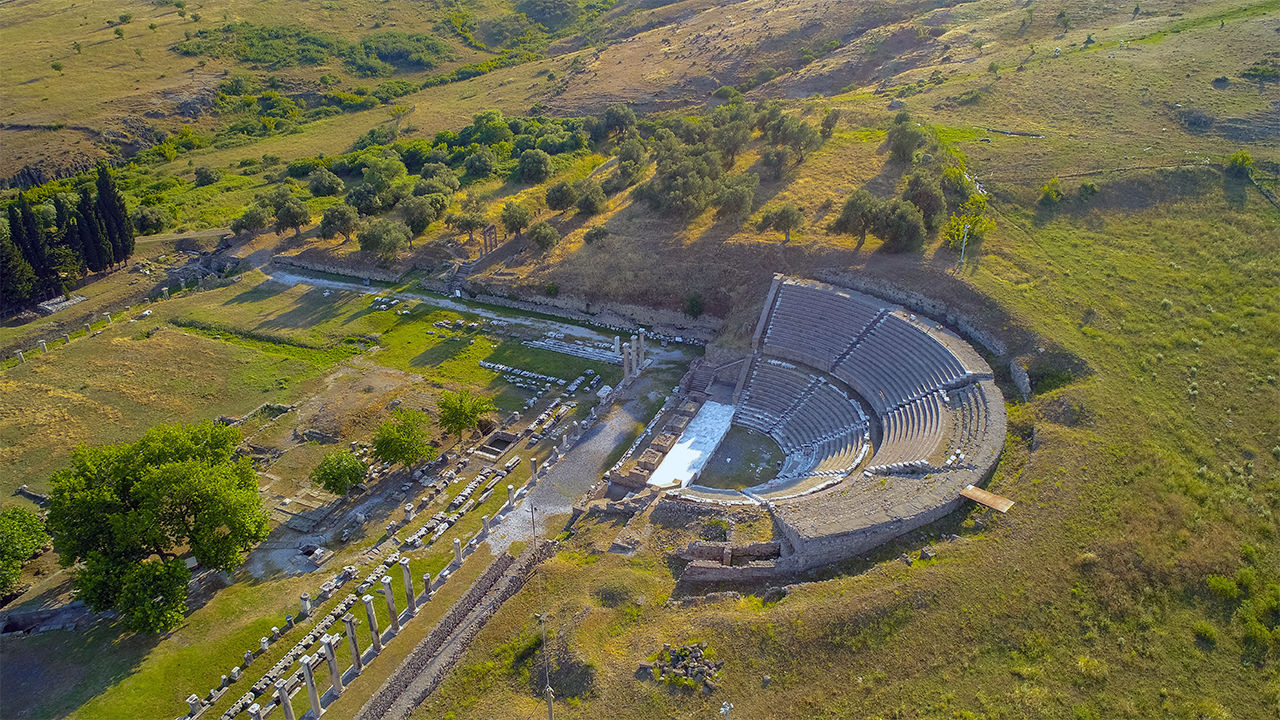
2.07.2021
5 Dakika
For centuries, medicine has been one of the most vital fields of science for humanity. Just like today, physicians were an important part of societies in ancient times. So, how did people treat injuries and diseases in the past? We aim to find the answer to this question in our "History of Medicine" video series, in which we examine how the ancient Anatolian civilizations approached human health.
The ancient city of Pergamon, one of the ruins we examined in the series, is home to many archaeological structures. Holding one of the most known ancient healing complexes of the region within its borders earns this ancient city an important position in the history of medicine.
For centuries, people have sought and found cures for their ailments at Pergamon, where treatments with many different therapeutic elements, from medicinal plants to music, were offered. Let's explore its history together:
Listed in 2014 as a UNESCO World Heritage Site, Pergamon is located within the borders of İzmir. Founded as the capital of the Attalid Dynasty during the Hellenistic Period, Pergamon became an important cultural, scientific and political center as it was located at the intersection between Europe and the Middle East. The Roman Empire took control of the city in 133 BC and it became the capital of the province of Asia. Pergamon, maintaining its importance by hosting one of the seven churches of Anatolia during the Byzantine Period, later became a part of the Ottoman Empire. The city, which has been home to many civilizations throughout history, fascinates its visitors with its Hellenistic, Roman, Byzantine, and Ottoman structures, the remains of which can still be explored today.
The city, which was built using highly developed urbanization and architectural techniques, was transformed into a residential area with a terracing system built on a steep hill. The city plan of Pergamon was divided into two, as lower and upper city. In the lower city, there were Hera and Demeter sanctuaries, gymnasium, lower agora, houses and many other social structures. The upper city, called the Pergamon Acropolis, was where the royal family and the city's leaders lived, and where the sanctuaries were located. One of the prominent buildings of the Acropolis is the magnificent Temple of Trajan, constructed from white marble in the Roman Period. The theater of the city, which has the steepest viewing area in the ancient world, is another architectural structure that is definitely worth seeing with its magnificent view.
Another feature that makes Pergamon unique is its library. With an incredible collection of 200,000 scrolls, the entire collection of this library was gifted to Cleopatra by Marcus Antonius in 41 BC. Another must-see building in Pergamon is the Red Hall (Basilica). This monumental structure was built in the 2nd century AD for Egyptian gods. Later, with the spread of Christianity, it was converted into a church and became one of the first seven churches in Anatolia.

Pergamon, which was home to numerous developments in the fields of science, culture, and art since its foundation, was also one of the leading centers of medicine in Anatolia. The Asklepion of Pergamon, a healing center and sanctuary dedicated to Asclepius, the god of health, was the main reason why the city is known as a medical center. While visiting the archaeological sites in Pergamon, you should definitely visit Asklepion, located in the immediate vicinity. You can also see and examine closely some of the artifacts excavated from Pergamon at the Bergama Museum.